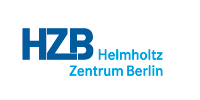vcan_resetdata¶
Here is the definition:
typedef struct
{ long port1 CDEP_NOALIGN_ATTR;
long port2 CDEP_NOALIGN_ATTR;
/* since the VME-CAN2 card has 2 ports, only 2 ports at a time
can be resetted, in order to make sure that the user knows
this, he has to specify the 2 ports of the card */
long bitrate1 CDEP_NOALIGN_ATTR;
long bitrate2 CDEP_NOALIGN_ATTR;
/* an integer, the bitrate is specified in Kbit/s, it may range
from 1000 to 5, currently supported bitrates:
1000, 666.6, 500, 333.3, 250, 166, 125, 100, 66.6, 50, 33.3, 20,
12.5, 10, 5
if bitrate doesn't match one of these numbers, the next higher,
valid bitrate is taken, the (integer-part) of the actual bitrate
is written back to this parameter */
} vcan_resetdata;
This is the driver-call-sub-structure that is used to reset the VME-CAN2
card. It is used in conjunction with the VCAN_RESET sub-function. Note
that it is not possible to reset one port of one card alone. Both ports of a
card are resetted at a time. In order to show this to the user, the user has
to provide both port-numbers for this command. Note also that the two
port-numbers must belong to a single card in the system.
- port1
Number of the first port that is to be resetted. Note that the second port number cannot be chosen independently of the first port number. Usually,
port1should becard_number*2.- port2
Number of the second port that is to be resetted. This number cannot be chosen independently of
port1. Usually,port2should becard_number\*2+1.- bitrate1
The bitrate for the first port. This field is an integer, the number may range from 5 to 1000. The unit for this number is kBits/second. The following bitrates are currently supported: 1000, 666.6, 500, 333.3, 250, 166, 125, 100, 66.6, 50, 33.3, 20, 12.5, 10, 5. If bitrate doesn’t match one of these numbers, the next higher, valid bitrate is taken. The (integer-part) of the actual bitrate is written back to this field.
- bitrate2
The bitrate for the second port. See also
bitrate1.
